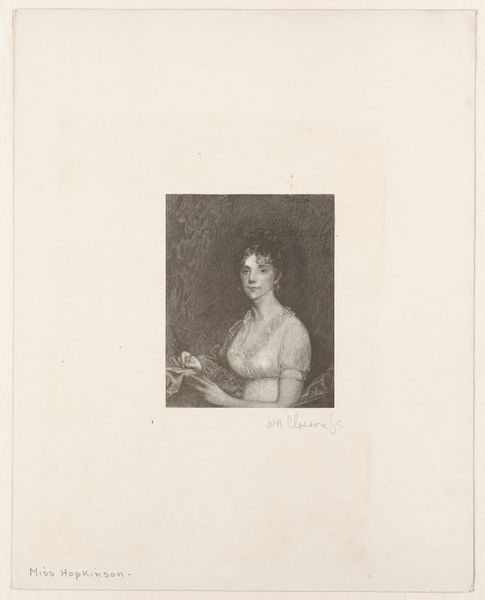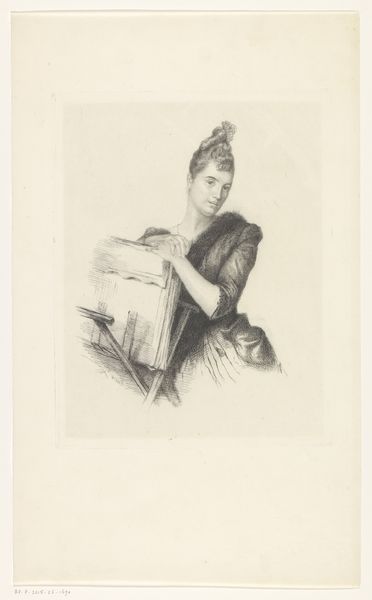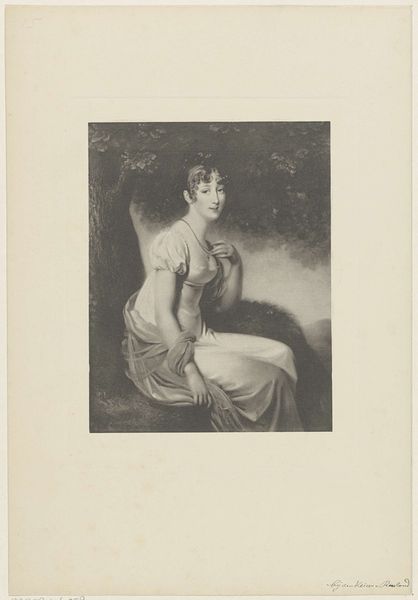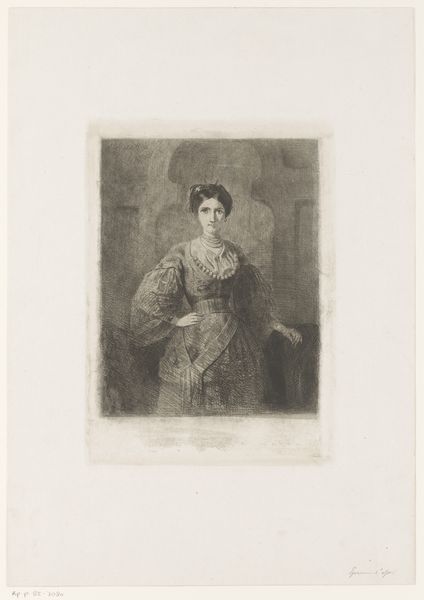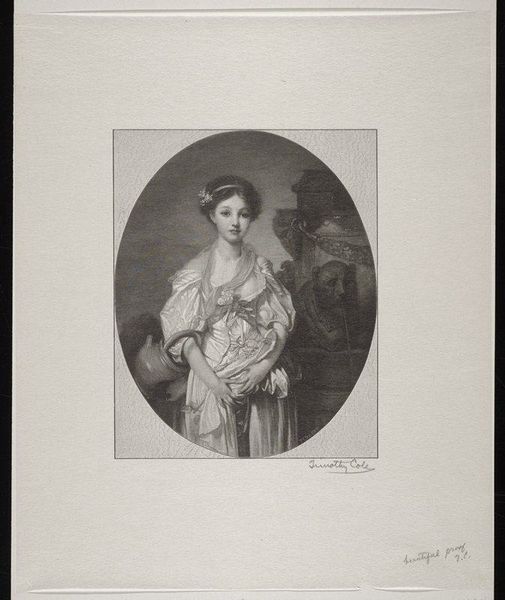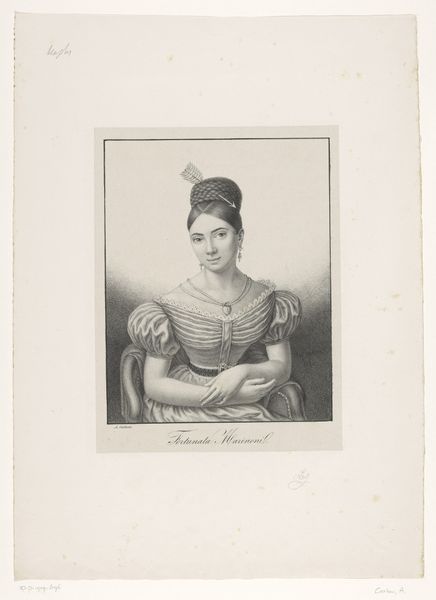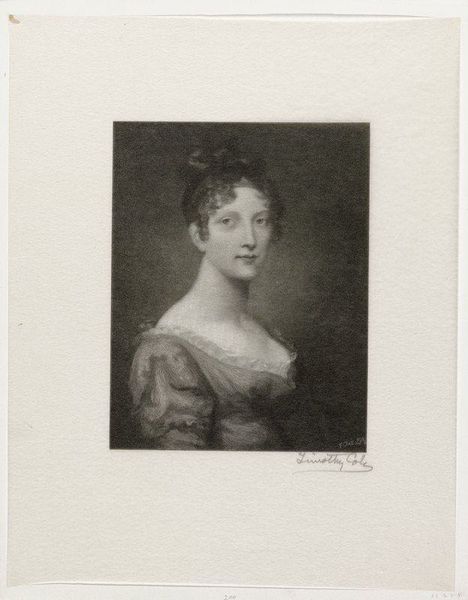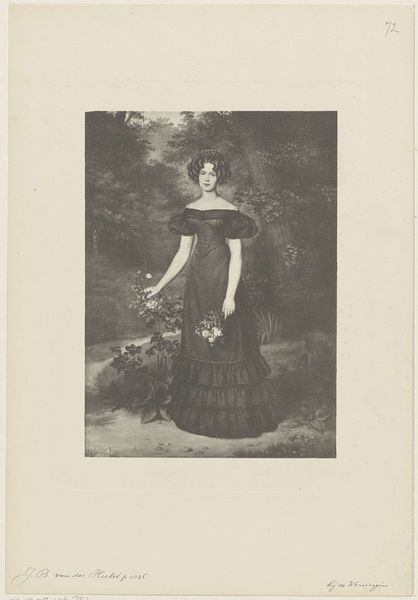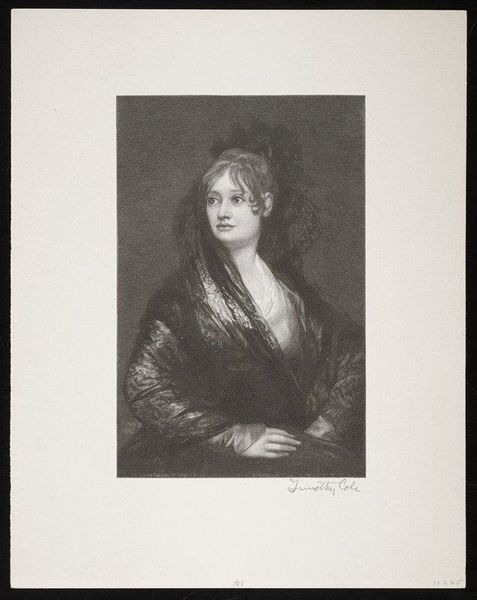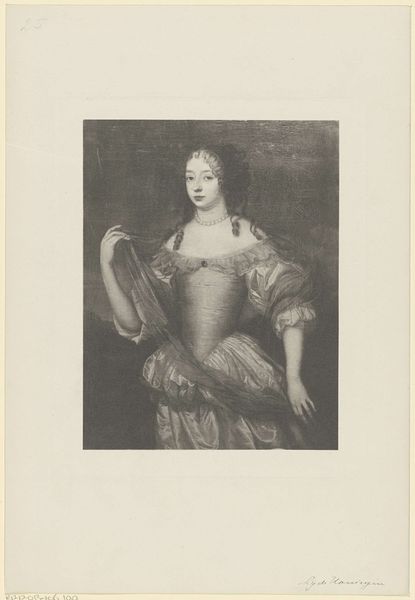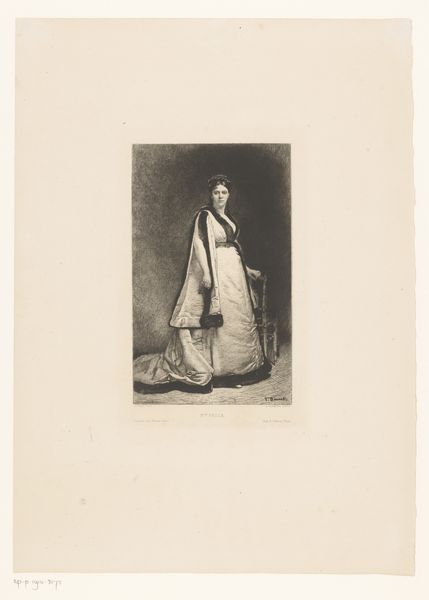
drawing, print, woodblock-print, pencil, woodcut, wood-engraving, engraving
#
portrait
#
drawing
# print
#
pencil drawing
#
woodblock-print
#
geometric
#
pencil
#
woodcut
#
line
#
academic-art
#
wood-engraving
#
engraving
Dimensions: 7 1/8 x 5 1/8 in. (18.1 x 13.02 cm) (image)12 1/16 x 9 9/16 in. (30.64 x 24.29 cm) (sheet)
Copyright: No Copyright - United States
Curator: Welcome. We’re standing before Timothy Cole’s wood-engraving "Comtesse Regnault de Saint Jean D'Angély," created in 1907. The work resides here at the Minneapolis Institute of Art. Editor: She has this gentle expression and posture. And I immediately perceive the geometric shape of the artwork: everything—her face, dress, even the window—seems very structured and precise. It speaks to an interesting juxtaposition of softness and control. Curator: The image speaks volumes about the socio-political atmosphere that birthed it, particularly the obsession with portraying aristocracy, in this case via reproduction through printmaking. The artist, Timothy Cole, became well-regarded for his wood-engravings of paintings by Old Masters. Editor: How fascinating that it’s a copy of an existing work! The rigid form perhaps comes not from life, but from attempting to capture somebody else’s artistic representation. But why reproduce art of the elite? Was Cole trying to democratize images of power, or further solidify it? Curator: That's a question many have posed, and art historians often debate this. Consider the late 19th and early 20th centuries: powerful individuals often utilized artistic patronage and portraiture to further legitimize their positions. Cole, through his skill in printmaking, facilitated this process. Editor: He certainly chose his subject with a meticulous eye. While on the surface, it's a straightforward portrait, her eyes hint at something more complex. Also, by reproducing a painting, he has essentially put another filter between her and the viewer, making this portrait also about the artist’s choices. Curator: He worked in the era dominated by social and political portraiture, mostly of powerful people. And while he didn’t revolutionize portraiture, his technique served the elite class. His role solidifies the connection between art and the distribution of social power at the turn of the century. Editor: That's a vital point. The work becomes a vehicle, deliberately or not, for disseminating an established system of representation, but the success is mainly linked to the talent in the service of reinforcing class differences. Curator: Well, examining “Comtesse Regnault de Saint Jean D'Angély,” certainly makes one consider the implications of portraiture, art history, and social stature. Editor: Agreed. It causes you to really look at how images both reflect and shape societal structures of power.
Comments
No comments
Be the first to comment and join the conversation on the ultimate creative platform.
